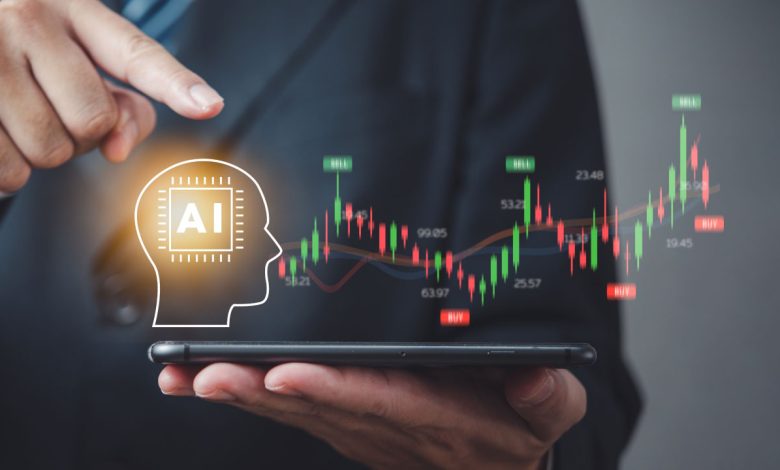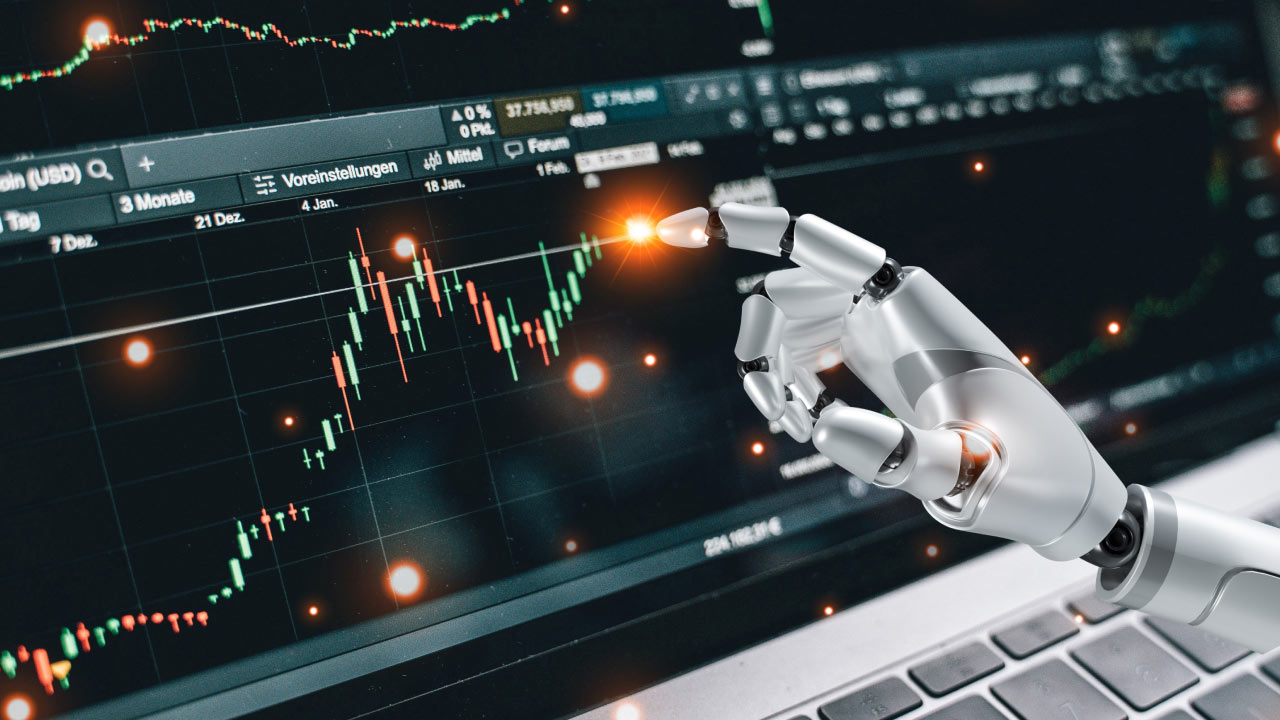
Artificial intelligence is changing financial markets quickly. Algorithms can scan millions of data points in seconds, find patterns that humans may miss, and even place trades automatically. For investors, this means speed, efficiency, and the chance of better returns. But with these benefits come serious questions about trust, fairness, and the danger of relying too much on machines.
This article looks at the ethical and practical challenges of using AI in trading, from data bias to accountability. Responsible use has never been more important, especially as firms explore a growing range of AI trading apps designed to shape investment decisions.
Why AI Matters in Trading
Markets have always depended on information. Traders have long searched for faster and more innovative ways to process it, from ticker tape in the 19th century to computer-based trading in the early 2000s. AI is the next major step.
Some of its key strengths are:
- Pattern recognition: AI can spot links between assets that people cannot see.
- Speed: It executes trades in milliseconds, far quicker than any human.
- Scale: It analyses thousands of securities at the same time.
These strengths are already shaping markets beyond equities. For instance, AI in crypto trading shows how automation and data-driven analysis now influence both digital assets and traditional markets.
While these capabilities give traders an edge, they also raise important questions. Can we trust systems we cannot fully explain? And what happens when those systems behave in unexpected ways?
Benefits and Limits of AI
AI brings clear advantages in trading. It helps investors make faster decisions, reduces emotional mistakes, and can analyse vast amounts of data in ways humans cannot. Yet these systems are not flawless, and their limits must be recognised.
Main Benefits
- Efficiency: AI automates repetitive tasks such as scanning price feeds or tracking economic news, freeing traders to focus on strategy.
- Risk management: Advanced models can monitor exposure across multiple markets in real time and flag unusual activity before it escalates.
- Constant operation: Unlike people, AI runs without breaks, which means markets can be monitored around the clock.
- Pattern detection: Algorithms can pick up subtle signals that might indicate early trends, giving traders more lead time to react.
- Scalability: A single AI system can track thousands of assets simultaneously, something no human team could manage.
Key Limits
- Overfitting: Models trained on historic data may perform well in backtests but fail when market conditions shift. This was seen during the pandemic, when many strategies broke down under extreme volatility.
- Data quality: Biased, incomplete, or poor-quality data leads to poor results. “Garbage in, garbage out” applies strongly in AI.
- Fragility: Technical errors, outages, or coding flaws can spread rapidly, sometimes triggering wider market instability.
- Lack of explainability: Many advanced models are opaque, leaving firms unable to justify why a trade was made – a major issue for compliance.
- Overreliance risk: Traders may grow too dependent on automation, reducing their own critical judgment and creating blind spots.
AI should be treated as a support tool, not a substitute for human oversight. Its strengths make it a powerful partner, but only when combined with transparent processes, robust testing, and clear accountability.
The Ethical Issues
AI in trading creates several ethical dilemmas that extend beyond technical performance.
Transparency
Many AI models are “black boxes”. They produce results without showing how they reached them. This lack of explainability makes it hard for clients, regulators, and even the firms themselves to trust the outcomes. Calls for explainable AI in finance are growing, as stakeholders want systems that can be audited and understood.
Fairness
High-frequency trading powered by AI lets large firms act faster than smaller players. This creates concerns about an uneven playing field where speed, rather than strategy, drives success. Regulators worry that this concentration of power could reduce competition and erode trust in market fairness.
Data Bias
AI learns from the data it is given. If historical datasets contain bias, the model will repeat or even worsen those distortions. For example, biased market data may lead algorithms to overvalue certain asset classes or underrepresent risk factors, leading to skewed trading signals.
Responsibility
When AI causes harm, accountability is unclear. Is it the programmer who wrote the code, the firm that deployed it, or the regulator that approved the system? Without clear rules, responsibility gaps can create legal and ethical grey areas.
Privacy and Data Use
AI relies on vast amounts of data to operate effectively. Collecting and processing that data raises questions about privacy, consent, and compliance with rules such as GDPR. If sensitive client data is mishandled or misused, trust in both the firm and the technology suffers.
The Role of Regulators
Regulators are still catching up with AI. In the UK, the Financial Conduct Authority (FCA) has stressed the need for stronger controls over algorithmic trading. Similar debates are happening in the US and Europe.
Main regulatory concerns include:
- Stopping algorithms from destabilising markets.
- Making firms explain how their systems are built and tested.
- Holding companies responsible for ethical use and bias checks.
Future rules may also require AI systems to be explainable and always subject to human review.
Lessons from the Market
- The 2010 Flash Crash
This event showed how algorithms can quickly spread market shocks. The Dow Jones fell nearly 1,000 points in minutes before bouncing back.
- Robo-Advisers
AI advisers make investing cheaper for the public. But they are criticised when advice looks too generic or fails in sudden market moves.
- Hedge Funds
Many hedge funds use machine learning to spot opportunities. Some succeed, but others lose heavily when models cannot handle unexpected events, such as the pandemic.
These examples show that AI can both stabilise and destabilise markets, depending on how it is managed.
How to Use AI Responsibly
For AI to remain sustainable in finance, firms must apply it responsibly. Several best practices are becoming clear.
- Keep human oversight: People should always be able to review and override AI decisions.
- Stress-test models: Systems need testing under harsh conditions, such as market shocks or missing data.
- Audit and document: Firms should record data sources and model updates, with independent reviews where possible.
- Think long term: Use AI to build stable markets and protect investors, not just to chase quick gains.
These steps reflect a broader movement in AI in finance, where banks, insurers, and investment firms are adopting automation but must also show that it delivers value responsibly.
What the Future May Bring
AI use in trading will keep expanding. Generative AI is starting to write market commentary, and reinforcement learning adapts strategies in real time. At the same time, investors and regulators want more transparency.
Future debates may ask:
- Should certain “black box” models be restricted?
- How can small investors be protected against faster, better-funded rivals?
- How should regulators work together across borders to manage AI-driven trades?
Conclusion
AI is reshaping trading at a rapid pace. It improves speed, efficiency, and prediction, but it also brings risks such as bias, opacity, and accountability gaps. If not handled carefully, these risks could erode trust in markets.
The key point is that AI is a tool. Its value depends on how firms design, test, and monitor it. The future of finance will depend on combining technology with human judgment, clear rules, and fair practices.






